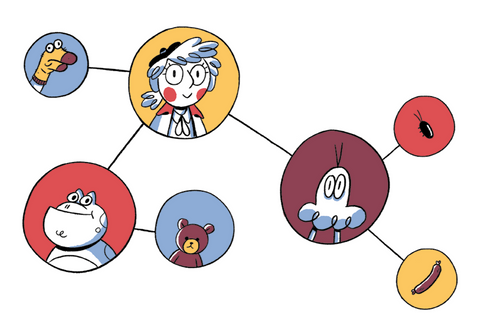You can have the best team, run the best workshops and have a kick-ass product, and it can all be tanked by bad leadership.
While we are all stuck with the leaders we have, it is possible to learn how to identify (and avoid) bad leadership qualities, both in ourselves and in the people we work for in the future.
The harm caused by bad leadership
It’s impossible to over-exaggerate the harm that bad leadership can cause. Some of the most obvious outcomes - people quitting, projects tanking - seem bad enough. But there are more insidious ways that bad leadership traits can bring companies down from the inside, almost silently.
Even one bad leader is enough to create discontent and spoil the company culture. If it doesn’t result in people leaving outright, it can still dent morale and productivity, reduce longevity, crush creativity and stifle innovation. To start with, other attributes of the business might mean that people stick around, but as the problem grows the only ones staying for long will be those that can stomach poor leadership or aren’t invested enough to notice or care. Does that sound like the sort of organisation you want to be involved with? Well don’t worry, it doesn’t have to be that way.
We’re all about solutions, so read on to learn how to identify the characteristics of bad leaders - as well as how to overcome them in yourself, with a change of mindset and a few tried-and-tested tools. There’s no excuse for bad leadership, so let’s get to work!
Bad leadership trait 1: Poor delegation
Your time is valuable. Everyone’s time is valuable, but as a leader yours is both ideologically valuable, but also probably quite costly. So use it wisely!
The main reason bad leaders don’t delegate is because they believe the old saying “If you want something done properly, do it yourself”. A good leader only hires people who can do their job better than they could do it themselves.
So instead of clinging onto control, trust your team and watch them spread their wings. If you’re successfully avoiding bad leadership characteristic #2, you’ll soon reap the rewards.
A great tool for this is the Priority Map Workshop Tactic, and the matrix it uses is also explained in the conveniently titled How to delegate tasks to your team article.
Bad leadership trait 2: Doesn’t prioritise objectives
Your objectives should be pretty close to the company’s objectives - that’s what leaders do. They unite the rest of the team on the company’s mission. That means that the company’s priorities are your priorities, too!
Of course, which objectives you focus on will depend on your team’s specialty. But if you’re trying to be all things to all people, your team won’t benefit from your sense of direction; that’s bad leadership.
Employ tools to help you prioritise in the long run (such as OKRs) and make sure you carry this process through to the smaller, everyday aspects of your job. If you have a special interest or pet project you want to spend time on, that's also fine - but don't draw your team away from their daily priorities to support you on it.
Bad leadership trait 3: Closed mindedness
If you have a closed mind and/or indulge assumptions, you’re likely to lead your team down a path of mediocrity (at best) or total failure (at worst). Instead of thinking ‘That’s how we’ve always done things’ or ‘If it ain’t broke, why fix it?’ try ‘How can we test that?’.
Every time you change something for the better, that’s an incremental improvement that you would have missed out on if you remained inactive. Use Assumption Map to ascertain the risk your assumptions pose, and how much evidence you have that they are accurate. Taking risks is scary, so indulge your cautious side with a Premortem workshop to make sure you avoid the worst-case scenario, or Idea Beetle to make sure your idea ‘has legs’.
Bad leadership trait 4: Sets a bad example
If you make the rules, it really really hurts morale for you to be seen breaking them. And we’re not just talking about actual policies here. You’ll find that your own example could easily set the tone for the whole team, and if it’s at odds with what you say, you could end up with a mutiny on your hands.
For example:
- Say you care about people’s wellbeing and respect their work-life balance, then consistently work late yourself (and, worse, send emails to your team at the weekend).
- Insist on a strict file/comms naming convention, but frequently send messages and docs without the proper titles.
- Demand regular meetings and prompt attendance, but often show up late or send apologies at the last minute.
Depending on the example you’re trying to set, the tools you need to employ will vary wildly. But the most important is your own integrity: make sure what you say and what you do match up.
Bad leadership trait 5: Poor communication
Great leaders hire people who are far smarter than they are, and then listen to them. Bad leaders don’t listen and expect things to happen “Because I said so”.
Even if you didn’t choose the team, they almost certainly have their own individual knowledge and experience that is hugely valuable, and your communication skills can be vital in bringing those things out into the open.
If you want to avoid poor communication, you’ve already got the tools! Open your door, your ears and your inbox. Try the Storyteller Tactic Story Listening for step-by-step instructions to help you tune into what people are really saying.
Bad leadership trait 6: Wants personal success
Leaders need people to lead - by definition. When your role is titled in reference to other people, it kinda means you can’t chase your own personal glory… well not alone. Instead, good leaders know that their own success is in the success of their teams and projects.
So, how do you ensure your team’s success? It’s not easy, but it is relatively simple. Support them. Get to know their strengths and motivations and help them use those things. Learn about their weaknesses, too, and plug those gaps. Communicate well, and let them do the same (see point five).
Bad leadership trait 7: Doesn’t seek feedback or personal improvement
Leading is not the same as managing. It’s a skill set, and you can and should keep building on it. Not to seek feedback means you think you’ve got it down already. Don’t ask what you’re doing well: ask how you could do even better.
Tools to help with this include your communication skills, as well as taking the time to include your own leadership in the discussion during retros. Provide your own feedback with personal OKRs. If you do everything listed in the previous items, you’ll be on the right track!
For ongoing support to help you be the best leader you can be, Team Tactics is available for pre-order (and the digital version is available now).









